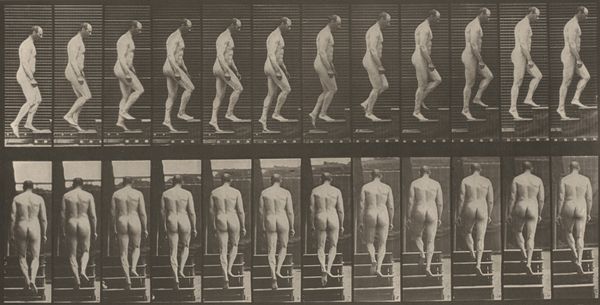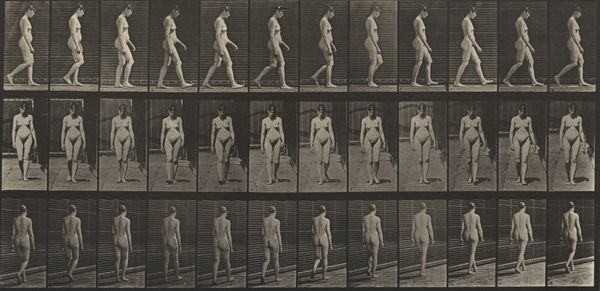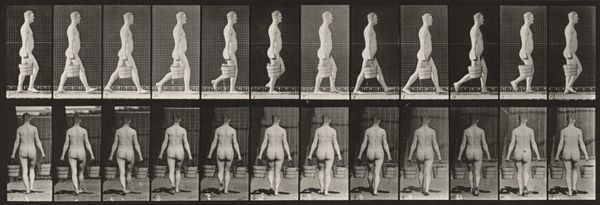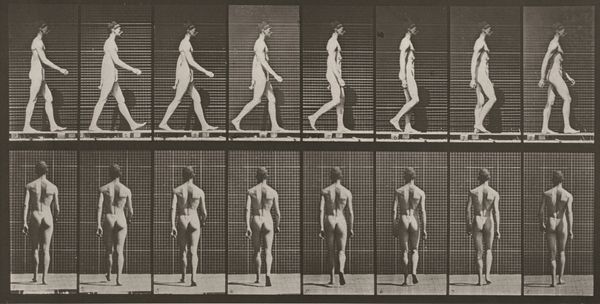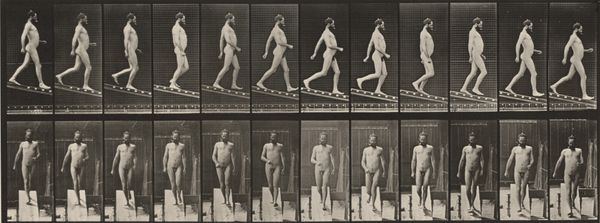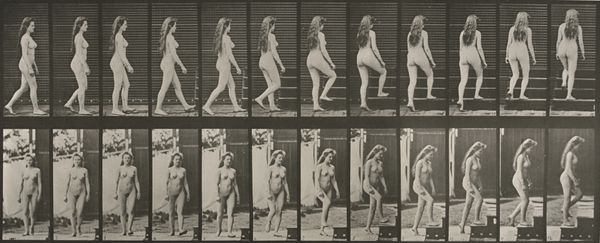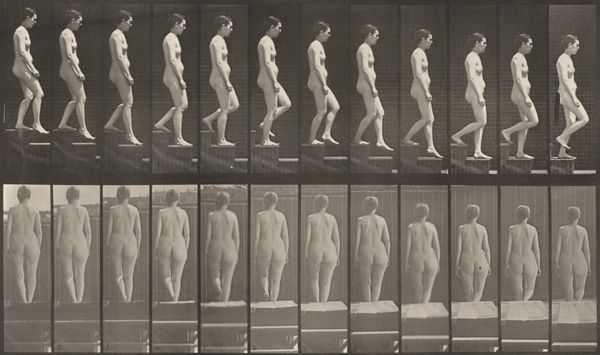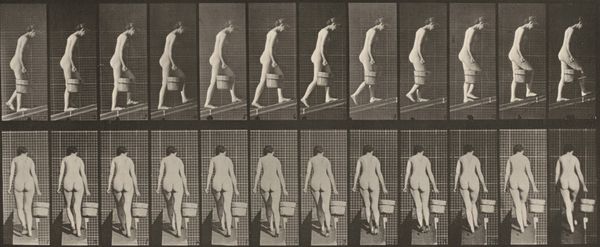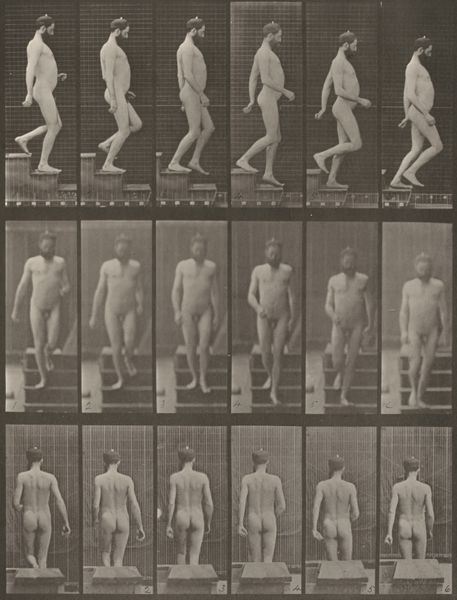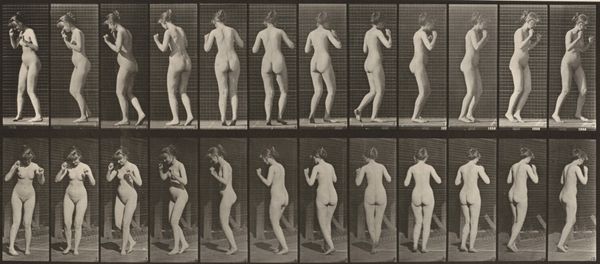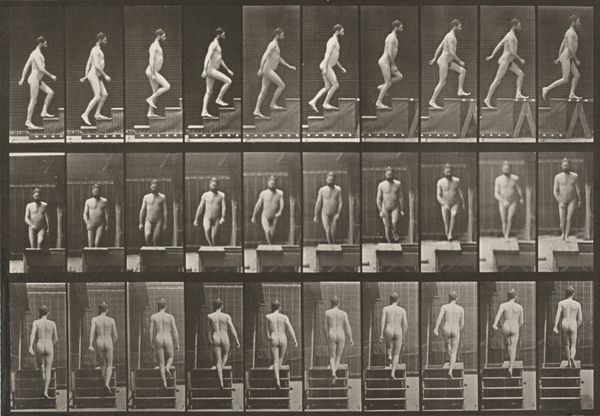
Dimensions: image: 17.4 × 43.3 cm (6 7/8 × 17 1/16 in.) sheet: 48.15 × 61.2 cm (18 15/16 × 24 1/8 in.)
Copyright: National Gallery of Art: CC0 1.0
Editor: This is Plate Number 15, Walking, by Eadweard Muybridge, created in 1887. It’s a gelatin silver print showing a figure in motion, captured in sequential frames. There's something so clinical and detached about this work; it feels almost scientific. What do you see when you look at it? Curator: I see a deliberate attempt to capture and dissect movement, transforming the human figure into a sequence of fragmented moments. It reminds me of ancient friezes attempting to depict a narrative over time, but through a distinctly modern, technological lens. Notice how the grid emphasizes the study aspect, almost dehumanizing the figure. Does this association with older, established forms surprise you? Editor: A little, I mostly associate this with the beginning of cinema. The sequential nature, that deconstruction of a fluid motion is so relevant for moving images. Curator: Indeed, and consider what movement means, symbolically. Walking isn’t just locomotion; it's progress, journey, life's path. Muybridge’s reduction to its components can be seen as a metaphor for modernity’s own fragmented experience of time and space, but I believe his intent to unveil something permanent remains. Doesn't the starkness also evoke ideas of vulnerability and exposure? Editor: I hadn't thought of that, but it’s so true. Seeing the body like this, stripped bare and laid out in stages... there’s a definite sense of vulnerability there. And a will to investigate every piece, just as in older iconography, even though using different means. Curator: Precisely. Perhaps Muybridge inadvertently revealed more about our relationship to time and the body than he initially intended. There is cultural memory attached to images that will permeate long after. Editor: That’s given me so much to consider about the connections between art, science, and the human experience! Curator: Me too; I always benefit from thinking through images and how they continue speaking through time.
Comments
No comments
Be the first to comment and join the conversation on the ultimate creative platform.
